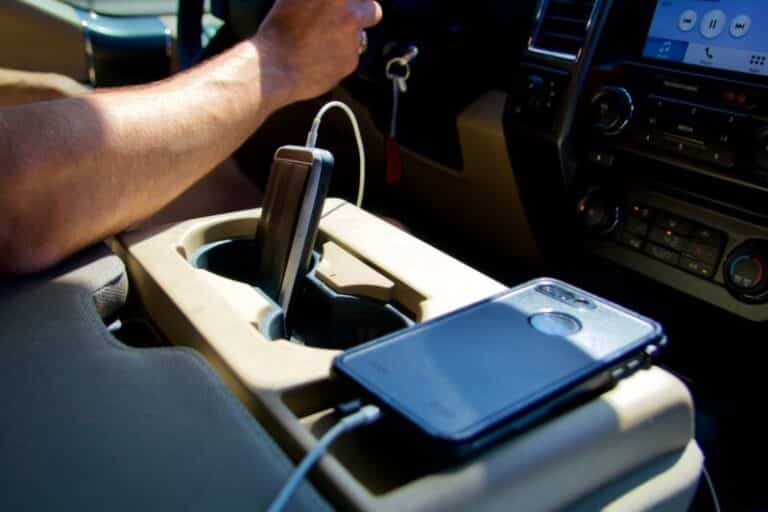Front Passenger Safety Restraint System Fault!
A little ride around town with friends is more enjoyable with guaranteed safety. One system that contributes to that safety is the passenger safety restraint.
However, just like any other part of your vehicle, this system can develop faults. One noticeable point is that the faults persist for a long time.
Hence it is necessary to understand the system, identify common issues, and how to fix them.
Water leakage and Sensor errors are common faults with the front passenger safety restraint system. The good news is that you can diagnose the errors and proffer the appropriate solution. You can quickly fix some errors at home, while some require expert services.
What Is a Passenger Restraint System?

This system in a car consists of different components that help to reduce sudden movement in an automobile.
This system uses sensors, airbags, and belt force wiring to minimize the passenger’s motion in various situations.
These situations include front collisions and sudden deceleration. The role is to keep you safe if and during an accident.
The seat belts are not a part of this system, but they contribute to the restriction when necessary.
The function of the passenger restraint system indicates its importance and the need to pay attention to any faults.
Four Common Faults of Front Passenger Safety Restraint System?
Several issues or errors can result in faults in the front passenger safety restraint system. Some faults are common, and you should be familiar with them.
Note that all types of errors in this restraint system need immediate attention.
When you consider the importance of this system, you understand why you need to pay attention to these errors.
Here is a detailed explanation of common faults of the passenger safety restraint system:
#1. Faulty Battery Wiring
The passenger restraint system uses considerable energy to run its different units.
There is constant data collection of weight, speed, and deceleration level by various sensors and units.
All these components make use of energy. If there is an insufficient power supply to the safety restraint system, it develops faults.
If the fault remains, the airbag won’t deploy when needed. Faulty wiring from the battery to the system is often the reason for this error.
Sometimes, the battery is defective and cannot dispense the required energy.
#2. Passenger Seat Sensors Malfunction
The system uses sensors in different areas to collect accurate data. One important example is the passenger seat sensor.
This sensor activates the safety restraint system when a passenger sits on it. This sensor records the weight each time there is a passenger.
The calculation is vital for the level of restraint needed. Faults to this sensor are prevalent. The sensor is under the seat, bearing each passenger’s weight.
This situation explains why it is common for this sensor to develop faults.
#3. Water Leakage
While water is essential for the smooth running of your vehicle, its spill damages some parts of the car.
That is why water leakage is a common fault of the front passenger safety restraint system.
Water leakage from the engine can affect some cables connecting different system parts.
Water spills from bottles on and around the front passenger seat can also lead to faults with the system.
#4. Airbag Sensors Malfunction
Sometimes, the fault is with the passenger airbag. This unit of the safety restraint system also makes use of sensors.
These sensors detect situations including front collision and sudden deceleration if these sensors become faulty, the system malfunctions.
These are the most common faults that you can develop in your car. However, some other defects affect this system too.
They include:
- Clock spring error
- Belt force limiter
- Airbag module error
- Damage to the seat belt tensioner
How To Fix a Malfunctioning Front Passenger Restraint System?
Fixing the system requires an initial diagnosis. Once you identify the problem, you can take the necessary step to solve the issue.
However, if you cannot identify the specific problem, you can simply check the different units in a certain order.
Here is a list of possible solutions.
#1. Replacing the Fuse
Fixing any front passenger restraint system malfunction should start with the fuse system.
Ensure the fuse is still functional before repairing or replacing any system part.
However, your task is to locate the fuse and identify which one represents your system.
Here are the steps to locate the fuse:
- Turn on the ignition and wait for the restraint system malfunction warning to turn up on the screen.
- While the ignition is on, go to the back and open the trunk.
- Open the inner cover of the part of the trunk that goes up. This surface should reveal the fuse schematics.
- You can also check out the car’s manual for this fuse schematics.
- Check out the fuse number in front of the “Airbag compartment.” It would be best if you took note of this number.
- Go to the fuse box and check out the number. You might want to smell the area for any strange smell indicating fuse burnout.
- Pull out the fuse corresponding to the number and check for issues. If you are unsure that the fuse is okay, you can replace it with a new one.
Replacing the fuse can help solve issues that result from the car computer glitch and sensor errors.
The cost of a new fuse varies depending on the car and ampere. You can check out the other repair tips if these steps don’t solve the problem.
#2. Checking the Passenger Seat
The next step is to check for any error under the passenger seat. You can lift the compartment to check for severed wires, cables, and loose connections.
Some lines collect data from the sensor under the seat to the restraint system.
Check and reconnect any lost connection. This option is another way to fix the restraint system malfunction.
#3. Reconnect the Battery
Suppose you suspect low battery voltage to cause the system malfunction. Then checking out the battery connection can solve the issue.
One tip is to remove the negative terminal and leave it open for an hour. Make sure the environment is safe and relaxed.
Reconnect the terminal and check for the warning message if it’s still active.
You might need help from local experts to check out the power connection to avoid hazards.
#4. Replacing the Sensors
If the error persists, the final step is to check and replace the sensors. Replacing the sensor will require input from local experts or dealers.
Attempting to do this yourself might lead to more damage. It is better to drive the car into the dealer shop and check for errors.
The cost of new functional sensors for most cars is high. Coupled with the labor cost, the replacement can range between $600 and $1000.
However, it is necessary to replace the sensor, considering the importance of the unit.
The table below shows the common faults of the front passenger restraint system and possible solutions.
| Common Faults | Possible Fix |
|---|---|
| Faulty battery wiring | Reconnect the battery |
| Front passenger seat sensor malfunction | Replace sensor |
| Airbag sensor malfunction | Replace sensor |
| Water leakage | Check for damages and repair |
Passenger Restraint System Fault Indicator
A few indicators warn you when the passenger restraint system develops a fault. The airbag light is one example.
If the airbag lights ignite every time you power on the car, it is vital to check the airbag.
The infotainment screen in some cars also warns of an error with this system.
This indicator requires immediate attention, as the screen often shows.
Final Thoughts
The front passenger restraint system protects you and your passengers from collisions or other accidents. It’s necessary to keep it functional at all times.
If you see a warning message or other indicators, you should check the common faults, diagnose, and fix them.
Fixing the problem assures you that you can drive in comfort and safety.






